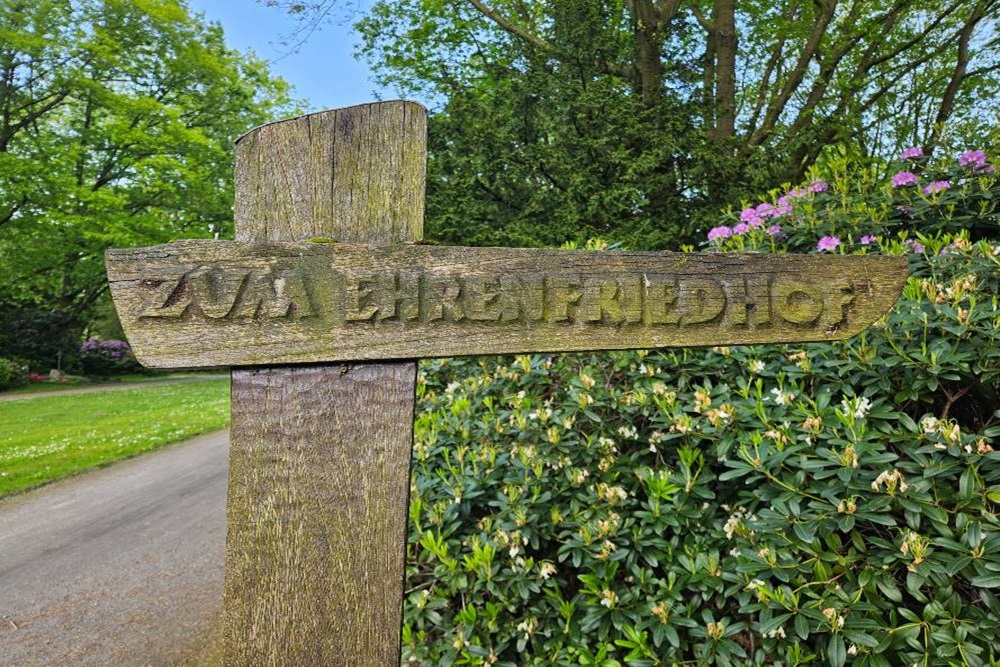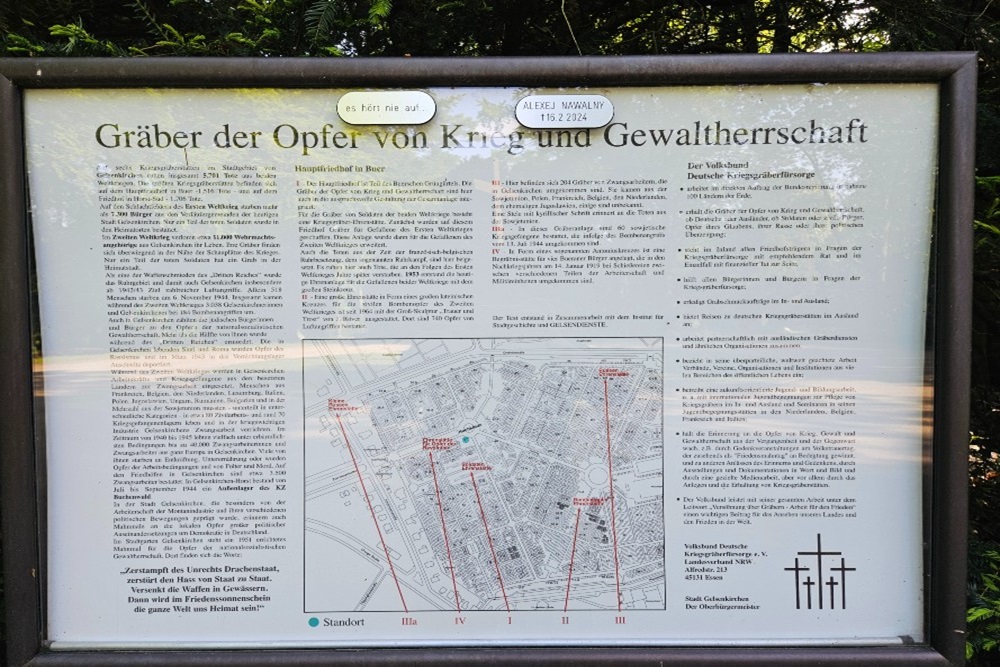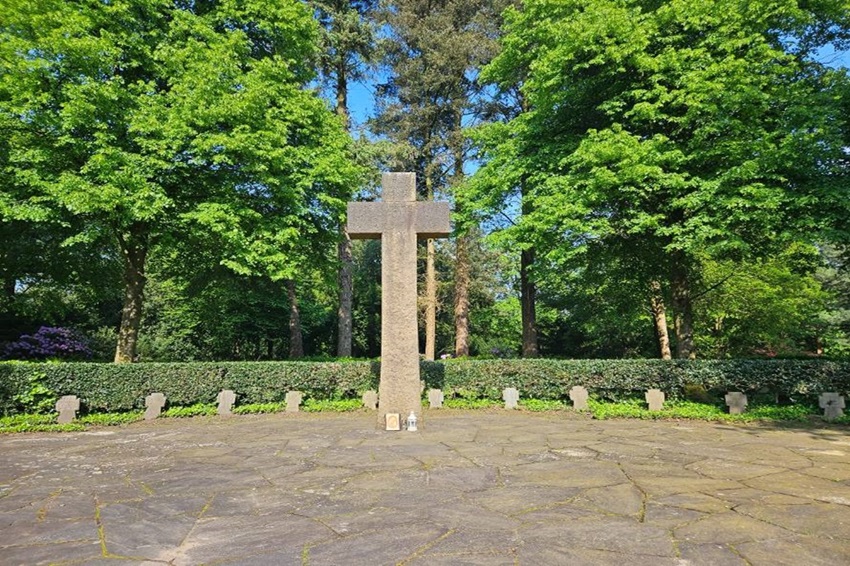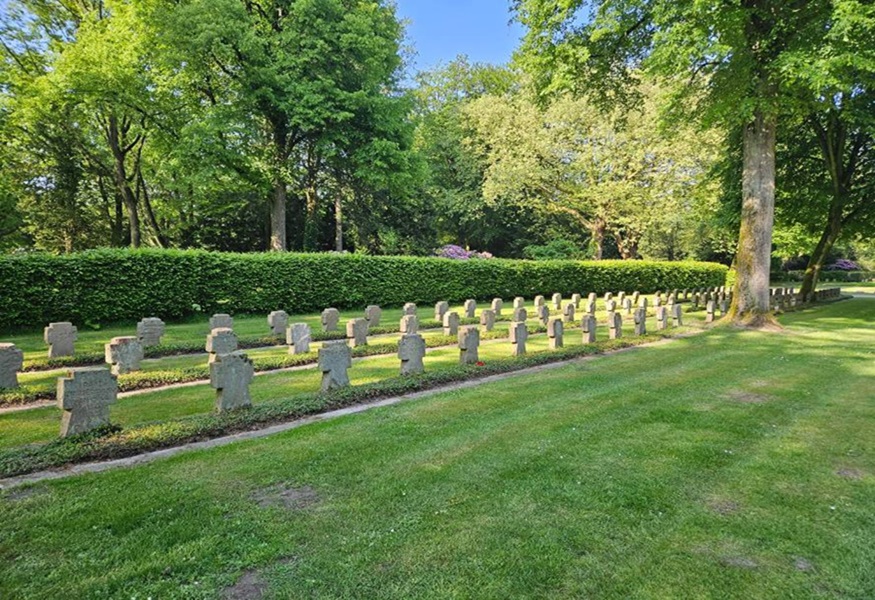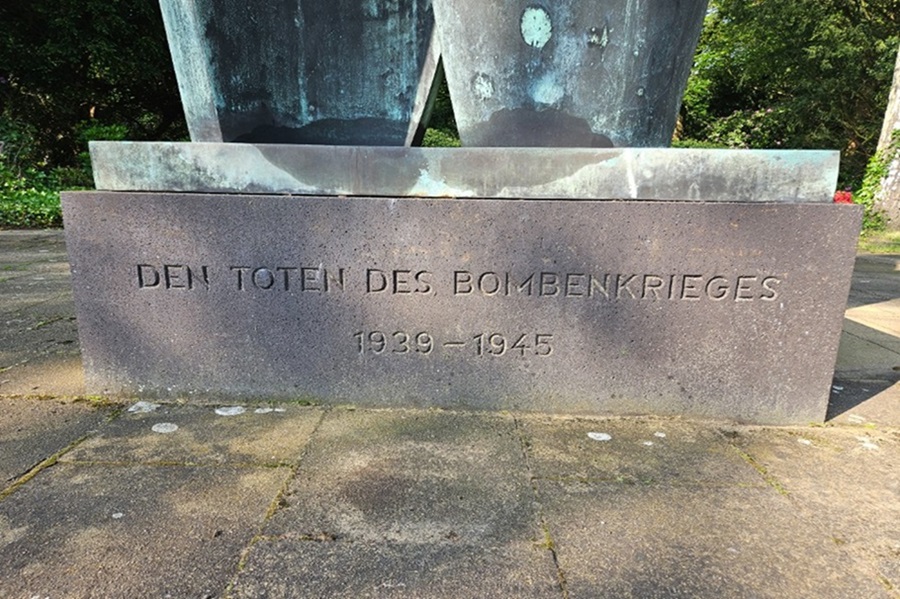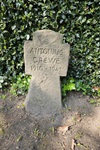German war graves Gelsenkirchen-Buer
The main cemetery is part of the Buerschen Grüngürtel. The graves of the victims of war and tyranny are also integrated into the sophisticated design of the overall grounds. There is a war grave memorial complex for the graves of soldiers from the two world wars. Initially, graves were created in this cemetery for those who died in the First World War. This area was then extended for those who died in the Second World War. The dead from the Franco-Belgian occupation of the Ruhr, the so-called Ruhrkampf, are also buried here. The dead who died years later as a result of the First World War are also buried here. In 1953, the current memorial complex for the fallen of both world wars was created with the large stone cross.
A large place of honour in the form of a Latin cross for the civilian bombing victims of the Second World War has been decorated with the sculpture "Mourning and Consolation" by J. Röver since 1964. There are 740 victims of air raids buried there.
There are also two graves of forced labourers who perished in Gelsenkirchen. At the grave site of 205 forced labourers, a stele with Cyrillic lettering commemorates the dead, most of whom came from the Soviet Union. At another gravesite are the graves of a further 60 forced labourers who died in a bombing raid on 13 June 1944.
A burial site in the form of a so-called St Anthony's Cross commemorates the four Bueran victims of armed conflicts over a new democratic beginning after the German Empire and the First World War. On 14 January 1919, those buried here were killed in shootouts between various sections of the working class from Buer and army units.
Do you have more information about this location? Inform us!
Source
- Text: https://kriegsgraeberstaetten.volksbund.de
- Photos: Rik van Velzen
Nearby
Point of interest
- Air-Raid Shelter Mathias-Stinnes-Platz - Bottrop-Welheim
- Air-Raid Shelter Günnigfelder Straße - Bochum
- Air Raid Shelter Gertrudisplatz - Bochum-Wattenscheid
Monument
- Memorial Crew Lancaster III LM327 - Gelsenkirchen
- Statue of Emperor William I - Essen
- Bismarck-tower Essen - Essen
Cemetery
- German War Graves Polsum - Polsum
- German War Graves Crange - Crange
- German War Graves Wanne-Eickel - Wanne-Eickel
